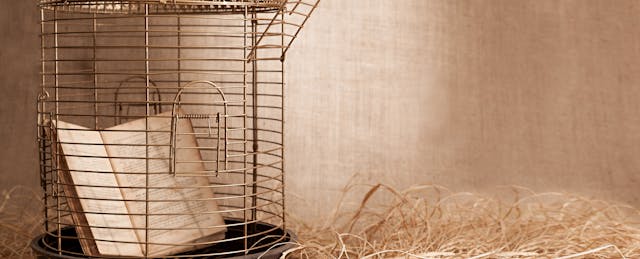While the debate is not new to the world of librarianship, the controversy about which books should be allowed to grace the shelves of a school library has become a common topic of conversation on news channels, talk shows and school board meetings.
At its heart, the dialogue digs into which books school librarians should make available to their students. Parents argue on both sides: those who want the library to only hold materials they deem appropriate, and those who understand that the appropriateness of those materials lies in the eye of the beholder.
As school librarians, we know that the books that sit on our shelves, the books that are checked out by our kids, the books that bring value to our communities are as wide and varied as the populations we serve.
Certified school librarians are trained to curate collections that anticipate our students’ information needs, interests and curiosities, and love of a good story. We do this for each and every student—the ones who live in the mainstream, and the ones that live in the margins.
We are intentional and thoughtful as we make the decisions about which books will take up valuable real estate on our library shelves.
We select materials for students whose families have lived on this land since the days of pre-history, students whose kin arrived on exploratory voyages from Europe or via forced relocation on slave ships, students whose families have arrived on this continent at some point in the last 100 years or the ones who moved in just last week.
We choose books for students who have one mom and one dad, those who have two of each, and those who have just one. We choose books for children who have extended networks of parents, step-parents, grandparents, aunties and uncles, partners of parents, and every combination you can imagine of adults who provide for them. We choose books for kids who aren’t sure who their family is because they have been in five foster homes since the school year started.
We choose books for students who know who they are and those who are questioning. We choose books for students of deep faith and those whose spiritual lives lean toward agnosticism, atheism or paganism. We have books with characters whose experiences reflect those of a Christian tradition, but also those who follow Islam, the ones who read the Torah and more.
We choose books to show them they belong and to help them see that others belong too.
Our collections are rich with inspiration—the wide potential of STEAM careers, the rich history of art, poetry with rich imagery and words that evoke emotion. We seek stories that uncover empathy, show what it is truly like to walk in someone else’s shoes, and tales that show how we’re better together.
We seek balance on our shelves. I have biographies of every modern president and first lady, as well as leaders from around the world. Across the library aisle from the art books are nonfiction books highlighting advancements in science. I strive to include animal books that showcase everything from an axolotl to a zebra. Mixed in with the decadent dessert cookbooks, you’ll even find one that hints that veggies are delicious!
My fiction shelves are full of ghost stories, creepy tales, and whodunits. But there are also epic tales of dragon quests, princesses who don’t need rescuing, and ruthless kings. We have World War II dramas, Civil War adventures, and survival stories from across the globe. There are even books with “naughty” words to make you giggle uncontrollably—you know, the ones with “fart” and “poop” and “butt”. And others that tell a story with no words at all.
We choose books to open up the world for them.
I purchase Pokemon books even though sometimes I can’t quite believe there’s still interest after decades (but there is) and Paw Patrol readers and Peppa Pig stories. None of these would likely be considered high-quality literature, but they lure kids in and make them beg for more.
I have students who crave more Greek mythology and those who want hip-hop poetry. I’ve queried kiddos about which sports icons they would most like to read about, and I seek biographies of those players. I have books about cats and dogs and snakes and fish. I have books about how to build with Legos, what dinosaur scientists do, and ones that lay out what is allegedly known about Bigfoot.
We choose books that make them want to read and read and read.
Our collections should inspire, entertain, help children grow. They should ground us, take us away, and open our hearts. They should help us examine our world, enjoy a giggle, and engage our minds. They should turn words into beautiful phrases. They should lay out reliable facts.
Ultimately, in my opinion, the conversation about the appropriateness of books belongs within the family. In 15 years of librarianship, I have never insisted that a child check out a particular book, never refused to let them choose another. I won’t start now.
I can’t possibly know all the values of each and every family in my community, but I will always respect their desire to choose what is best for their own children. I draw the line at them choosing for other people’s.


